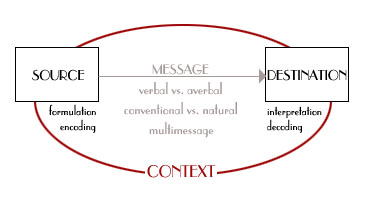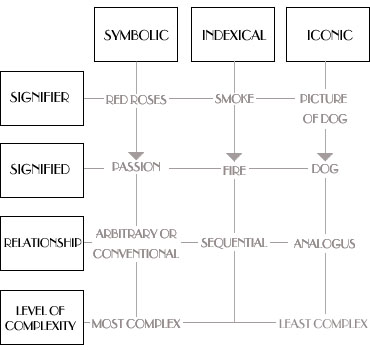| |
|
The main reason
for elaborating thisreport by Sebeok,as the time working as a consultant
to the Human Interference Task Force for Betchel Group was:
To design a reasonably
fail-safe means of communicating information about the repository and
its content, such that the system's effecttiveness would be maintained
for up to 10,000 years (about 300 generations).
-Because of the
potential for exposing unsuspecting populations to releases of radioactive
materials for extended periods
-Because future
societies may need to use the materials at present considered to be
wastes. For that reason draft EPA [Environmental Protection Agency]
would preclude tamperproof non retrievable systems.
The prime objective
is to transmit knowledge of the repository to future generations, allowing
them to plan their activities accordingly. The report was submitted
to the US Nuclear Regulatory Commission, via the US Department of Energy
in 1981.
Semiotic Techniques
This method to prevent
human interference with repositories during the first 10,000 years after
their closure, relies on semiotic techniques designed to restrict, if
not altogether prevent, access to the material.
Over a long period of time spoken and written languages are sure to
decay to the point of incomprehensibility, making necessary to use a
method that goes beyond linguistics. Semiotics is the discipline
which brackets the conjoint scientific study of both verbal and averbal
systems of communication, symbols can be used for transmission across
space and through time, the formulation or encoding of these symbols
from the source, their trasmission through a medium, the interpretation
or decoding of these symbols by the destination and finally their signification
is the main interest of semiotics. The context in which any message
is emitted, tranmitted and admitted influences its interpretation, and
vice versa:the context is continously modified by the messages baing
interpreted.
Differences between input and output can be limited using redundancy,
which is introduced by the source to decrease the probability of tranmission
errors.
Distinction between
verbal vs averbal messages: the verbal messages are the
study of linguistics, one of the moost sophisticated and formalized
branches of semiotics, the averbal messages are by definition non linguistics,
and they have not comprised a unified field of study. In Hippocratic
writings (c. 460-c, 377 B.C.) semeion indicates "symptoms"
by which a physician identifies a disease and forecast its outcome.
Distinction between
conventional vs natural messages: conventional messages are
those whose power to signify depends on some prior agreement, presumed
to have been reached at some temporal juncture and thereafter accepted
as a matter of custom, natural messages have the power to signify the
same things at all time and all places, their interpretation does not
presuppose a familiarity with the conventions of a particular group.
There are also multimessages:
i.e. a conventional gesture that has a number of totally distinct meanings,
the choice of interpretation depending on the time and place.

Types
of Messages
In Roland Barthes
text "Mith Today" (1957) he states that any semiology postulates
a relation between these terms: a signifier and a signified.
For Ferdinand
de Saussurein "The Nature of the Linguistic Sign" (1916) the
signified is the concept, the signifier is the acoustic image (which
is mental) and the relation between concept and image is the sign (the
word, for instance), which is a concrete entity. For Freud, in "Slips
of the Tongue" (1901), the human psyche is a stratification of
tokens or representatives.
We ca summarize
as following:
SIGNIFIER(container)
= EMPTY/FORM
SIGNIFIED (meaning)
= FULL/CONTENT
SIGN (container+meaning) = associative total of the first two terms

Based on the theories
of De Saussure/ Peirce and the previously mentioned references message
types are either simbolic, indexical or iconic:
A symbolic message is one whose needs a pre-existing social convention,
which specifies that the message will, to all who concur, stand for
thus-and-so, in order to be understandable. The technical word used
for highly formalized symbols in the visual mode is emblem.
An indexical message is one which "points to" an object
or is a sample of it.
An iconic message is one which resembles-according to some conventionally
accepted criterion-some agent of the real world to which it refers.
See further on mith
as a second order semiological system in
Roland Barthes, "Myth Today" (1957).
The author's
Conclusions
The followings are
the main conclusive points of Sebeok's report:
1. "Each mode of communication - iconic, indexical symbolic (or
emblematic) - has a set of advantages and a corresponding set of disadvantages,
which are both context-bound. Since the context is far from predictable
at any stage over the next 10,000 years, and with the passage of time,
is bound to become increasingly equivocal, it will be recommended that
all signs be constructed of a mixture of the three modes. While this
intermingling will still not be fail-safe, it is certain that the more
redundancy is built into the system, the more this will tend to ensure
accurate decoding by any destination."
2.The perception image-based coding varies across species, cultures
and times. Images should be used, but selected with extreme forethought,
and should always be incorporated into a framework that judiciously
intermingles icons with symbols, supplementing the pair with indexes
whenever is feasable.
3.Human senses register only a small portion of ambient stimuli. It
is very difficult to foretell what sensory prostheses will be at man's
disposal in future decades and centuries. Here again redundancy offers
the best hope; all channels that seem technically feasible should be
utilized.
4.Information needs to be launched and artificially passed on into the
short and long term future with the supplementary aid offolkloristic
devices, a combination of an artificially created and nurtured ritual-and-legend,
which would be a "false trail" for the uninitiated, who would
be steered away from the hazardous site for reasons other than the scientific
knowlwdge. A ritual annually renewed can be foreseen, with the legend
retold year by year. The actual "truth" would be entrusted
exclusively to an "atomic priesthood", that is a commission
of knowledgeable physicists, expert in radiation sickness, anthropologists,
linguists, linguists, semioticians, etc.
5. Since abroad the human intrusion factor into waste storage sites
is scarcely studied, planning should begin imediately to internationalize
the communication measured previously discussed. The ultimate design
adopted should enjoy the benefit of worldwide thinking about the problems
we face and their implications.
6. Information tends to decay over time; that information may be dissipated
but not gained is one form of the 2nd Law of Thermodynamics, that also
states that the probability that the entropy in the system shall decrease
is zero.
As a solution of this problem the author proposes a so-called "relay
system" of information transmission by which the 10,000 years envisaged
is divided in manageable segments of shorter and foreseeable periods.
It is recommended that the messages at the burial site be designed for
only three generations ahead. This message would have to be supplemented
by a metamessage incorporating a warning that the object message at
the site be renewed roughly every 250 years. For the informations kept
in the archives a similar set of instructions should make it clear that
, as the information starts to decay, it should be updated.
Discussion Topics
What if future generations
won't obey to the instructions of the past?
Is it correct to keep the general masses in the darkness, using the
mith/ritual message having only few experts aware of the "truth"?
May this lead to some form of tiranny? And what would happen if the
few experts holding the truth all die for a sudden disaster wich wouldn't
allow them to create new depositories of the truth? Why
to divide the 10,000 years is such small periods of time? Shouldn't
we at least try to elaborate some sign/symbol which could stay for a
much longer time? Would a stone sculpture (like the one on Easter iland,
for instance) be a permanent enough sign? How should it look?
See
"Swamps of Jersey, The Meadowland", from National Geographic,
February 2001.
Readings
done on the topic for my presentation:
Roland Barthes,
"Myth Today" (1957)
Ferdinand de Saussure, "The Nature of the Linguistic Sign"
(1916)
Ferdinand de Saussure, "Language and Linguistic" (1916)
Ferdinand de Saussure, "Linguistic Value" (1916)
Sigmund Freud, "Slips of the Tongue" (1901)
Michael Foucault, "The Discourse of Language" (1970)
|

